|
Have a safe day!
Monday, Dec. 2
2:30 p.m.
Particle Astrophysics Seminar (NOTE LOCATION) - WH8XO
Speaker: Dragan Huterer, University of Michigan
Title: The Quest for Primordial Non-Gaussianity
3:30 p.m.
DIRECTOR'S COFFEE BREAK - 2nd Flr X-Over
4 p.m.
All Experimenters' Meeting (NOTE LOCATION) - One West
Tuesday, Dec. 3
10:30 a.m.
Research Techniques Seminar - WH8XO
Speaker: Roger Rusack, University of Minnesota
Title: The Upgrade of the Forward Calorimeter of CMS for the HL-LHC
3 p.m.
LHC Physics Center Topic of the Week Seminar - WH11NE
Speaker: Lian Tao Wang, University of Chicago
Title: New Signatures of Dark Matter at the LHC
3:30 p.m.
DIRECTOR'S COFFEE BREAK - 2nd Flr X-Over
THERE WILL BE NO ACCELERATOR PHYSICS AND TECHNOLOGY
SEMINAR THIS WEEK
Click here for NALCAL,
a weekly calendar with links to additional information.
Ongoing and upcoming conferences at Fermilab
|
|
Monday, Dec. 2
- Breakfast: blueberry crepes
- Breakfast: sausage, egg and cheese croissant
- Philly-style cheese steak with peppers
- Smart cuisine: sweet and sour apricot chicken
- White-wine poached salmon
- Spicy Asian chicken wrap
- Stir fry sensations
- Egg drop soup
- Texas-style chili
Wilson Hall Cafe menu
|
|
Wednesday, Dec. 4
Lunch
- Mexican pork stew
- Refried beans
- Rice
- Pineapple flan
Friday, Dec. 6
Dinner
- Mussels in white wine and thyme
- Medallions of beef
- Sour cream and chive mashed potatoes
- Haricots verts
- Chocolate pots de crème
Chez Leon menu
Call x3524 to make your reservation.
|
|
Gene Fisk receives medal from Mexican Physical Society
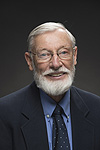 |
|
Gene Fisk
|
The Mexican Physical Society Division of Particles and Fields has awarded Fermilab scientist Gene Fisk a medal for his outstanding support of the development of experimental groups on collider physics in Latin America, particularly in Mexico.
DPF President Humberto Salazar and Vice President Mauro Napsuciale presented the award in Oaxaca, Mexico, to Fisk, who accepted it on behalf of the DZero experiment.
|
Fermilab welcomes new deputy CIO
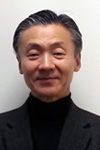 |
|
Jin Chang
|
Jin Chang started as Deputy CIO of Fermilab in October, bringing years of experience and enthusiasm to the role. Jin will be responsible for overseeing a large part of the Office of the CIO, in particular, the administrative support, financial management, computer security program, project and portfolio management, enterprise architecture, and policy areas of work.
"I think the lab has a lot to offer," Jin said. "I also think core competencies of the computing sector can be leveraged to explore a lot of different [areas]. So I'm very excited."
Read more
—Elyse Hornstein
|
What's in a name? The wit and whimsy of a national lab's conference rooms
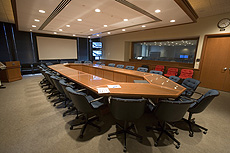 |
Fermilab's One East is one of the less imaginatively named conference rooms. Luckily, the Snake Pit, the Doghouse and the Sunrise keep the lab's room directory interesting. Photo: Reidar Hahn |
This summer, The New York Times' Opinionator blog posted a photo of an ordinary, fluorescent-lit hallway, indistinct apart from one feature: a placard proclaiming "DUNGEON" in tall capital letters. As part of the blog's "summer game" series, readers were asked to guess the context of the photo. Many correctly guessed "conference room," but none deduced the precise location: Fermi National Accelerator Laboratory, a Department of Energy-funded high-energy physics lab in the suburbs of Chicago.
As it turns out, Fermilab plays host to a trove of whimsical, bizarrely named conference rooms.
While the Dungeon is found in the lab's Cross Gallery, a building dedicated to accelerator operations, most of the conference rooms are housed in the lab's main office building, Wilson Hall. John Kent, the building manager for Wilson Hall, said that rooms are often named by those who would most often use them. The building, modeled after a Gothic cathedral in Beauvais, France, has one of the world's largest atriums, and, at 16 stories, it towers over the rest of the lab grounds. Much of the work conducted there translates into high-tech particle accelerator experiments and contributions to scientific discoveries such as the Higgs field.
Let's explore, from the ground up.
1. Names of meeting rooms start out simple and ordinary on the first floor: One North, One East, One West and The Small Dining Room.
2. The second floor, though, is where things start to get weird. For starters, both the Black Hole and the Snake Pit flank the north end of the building. Then, the Comitium is just a short jog away, its name stemming from the Latin word for "assembly." Fermilab's first director and Wilson Hall's namesake, Robert Wilson, chose that one personally as a hat tip to the so-named outdoor public meeting spaces of ancient Rome — Wilson had spent some time studying art in Italy prior to his directorship days.
Wilson also named Curia II, another second-floor conference room (preceded by the Curia in the Fermilab Village), this time after a Latin word thought to derive from the word "coviria," meaning a "gathering of men." No word on how Fermilab's female employees feel about this.
As one climbs higher in the Brutalist concrete tower that is Wilson Hall (there's a reason it's also called the high-rise), the conference rooms get fewer and farther between.
Read more
—Sarah Witman
|
Does the positron 'excess' really exist?
From Physics World, Nov. 27, 2013
The positron "excess" measured by two independent space missions and linked by some physicists to dark matter or pulsars does not exist, according to new theoretical work done by an international team of researchers. Instead, the researchers have calculated a "robust" upper limit for the positron flux created via interactions of high-energy cosmic rays with ambient gas in the galaxy and say that the flux measured by the Payload for Antimatter/Matter Exploration and Light-nuclei Astrophysics (PAMELA) experiment and the Alpha Magnetic Spectrometer (AMS) lies below this limit.
Read more
|
|
The right stuff for dealing with the white stuff
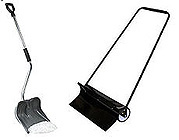 |
| When shoveling snow, use tools that are friendly to your back. |
Snow can be beautiful, but we generally don't want it to linger on our sidewalks and driveways. At the same time, removing it presents challenges, including for our hearts and backs. Heavy snowfall appears to correlate with an increase in the incidence of heart attacks and back strains. Medical science backs up, to a degree, the risk of a heart attack while shoveling snow.
People often try to clear snow shortly after waking, when their body chemicals are most prone to heart attacks. Heavy exertion from shoveling increases blood pressure, and the cold causes the body to divert blood flow from the limbs to the torso. These factors create a perfect storm of hazards for your heart.
Here's what you can do to help reduce the risk of endangering your heart:
- Wait at least one hour after waking before shoveling snow.
- Ease into the activity slowly.
- Take breaks. While it's tempting to finish it all in one go, remember that you can't shovel from the hospital gurney.
- Make sure you are well hydrated. This will help cut down on clotting risks.
- Keep yourself warm with layers of clothing, which prevent blood from leaving the limbs.
The spine, particularly the very dynamic discs between the vertebrae, is also at risk when shoveling snow. Our discs' particular anatomy allows them to "take a set," or deform. Within the first four hours after waking, they realign themselves, so once again, morning is against us. The pressure on the discs is lowest when we maintain the curvature of an upright spine. Unfortunately our backs tend to go to a flattened or reverse curve when we lift with a snow shovel. Twisting the spine to toss the snow introduces additional stress to the outer fibers of our discs.
Observe the following to avoid disc problems while shoveling:
- Stretch before you shovel.
- Push, rather than pull, the snow as much as is practical.
- Keep the load close to your body.
- Scoop while pretending to look up to keep the spine's natural curve.
- Consider using a curved-handle snow shovel that lets you load and unload snow with a reduced lift distance.
- Face the spot where you want to throw the snow. Twisting is a bad idea when lifting.
- Use anti-stick spray or automotive wax on the shovel to prevent heavy clumping of wet, sticky snow.
Following these tips will keep you upright as we deal with the winter white.
—Brian Svazas, M.D., M.P.H.
|
Employee receives degree through Fermilab Tuition Assistance Program
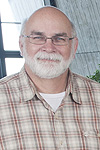 |
|
Rick Van Conant
|
On Nov. 25, we recognized three Fermilab employees who received degrees through the Fermilab Tuition Assistance Program.
A fourth employee, Rick Van Conant of the Scientific Computing Division, also received a degree through the program, earning his Bachelor of Science in network and communication management. Fermilab Today congratulates the degree recipients.
|
Looking up
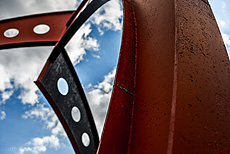 |
| Broken Symmetry divides the sky. Photo: Steve Krave, TD |
|
Elusive Higgs decay channel spotted; particle looks ever more standard
From ars technica, Nov. 27, 2013
The Standard Model in physics seems to have split personalities. It's very obviously incomplete since it has no mechanism to give neutrinos mass, and it has no particles that correspond to dark matter. But it handles the phenomena it does include with a precision that seems to frustrate some physicists, who are anxious for signs of a new physics.
This was clearly demonstrated by the discovery of the Higgs boson, which showed up pretty much exactly as predicted. There were a couple of potential discrepancies between prediction and reality, but the researchers behind the ATLAS detector have now slammed the door shut on one of those.
Read more
|
|